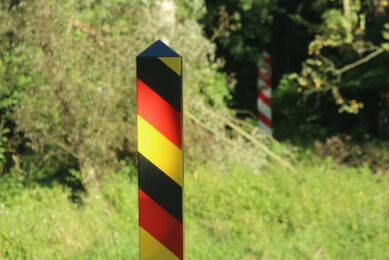Check those feeder gaps!
You have all got the latest and well-publicised feeder space allowances for growing and finishing pigs – well, I hope you have, as it is very important to get this right in terms of growth and feed usage. After this, in feed usage terms, comes the correct through gap allowance for the pigs as they grow. Let’s put some figures to this.
Table 1 shows the penalty which can occur when pigs have to work too hard for their feed and I have taken the liberty of extrapolating work done 14 years ago into cost-penalty terms, i.e. meat per tonne of food foregone. This shows that not getting the feeder gap right for the age of pig was equivalent, in those days, to the producer having to pay 14% more for his food.
Things seem much the same today, as American and Canadian researchers have recently found very similar penalties, which I have again calculated out into MTF terms (so much better for pig farmers than the FCR-worsening measurement which researchers still use). The penalty this time was over 20 kg less MTF – but to a heavier slaughter weight than in the Europe of 1995.
Table 1. Incorrect feeder adjustment equals a 14% hike in feed costs.
©©©©©©©©©©©©©©©©©©©©©©©©©©©©©©©©©©©©©©©©©©©©©©©©©©©©©©©© Too little (a)©©©©©© Adequate (b)©©©©©©©©©©© Difference
Days to 100 kg©©©©©©©©©©©©©©©©©©©©©©©©©©©©©©©©© 96.3©©©©©©©©©©©©©©©©©©© 82.8©©©©©©©©©©©©©©©©©©©©©©©©© 13.6 days
Food eaten per pig (kg)©©©©©©©©©©©©©©©©©©©© 189.7©©©©©©©©©©©©©©©©© 182.9©©©©©©©©©©©©©©©©©©©©©©© 5
Saleable meat/tonne of feed (kg)©©©©©©© 270©©©©©©©©©©©©©©©©©©©© 288©©©©©©©©©©©©©©©©©©©©©©©©©© +18 (6.7%)
Feeders preset, not adjusted
Feeders adjusted according to consumption residues©©©©©©©©©©©©©©©©©©©©©©©©©
Evenness matters, too
Those of you who accompany me on my farm visits know that I am ‘hot’ on feeder throat gap management, so it was particularly interesting for me to see the following on a large Eastern European farm last year, which had four large nurseries. One was managed very well in this respect, and one very carelessly by a novice stockman. The difference in evenness (i.e. lack of variation particularly at shipping) of the two groups of pigs at 30 kg was obvious.
Now the owner is a remarkable man. Instead of rushing off to bawl out the errant stockman, he agreed to my cheeky suggestion (in the cause of science!) to leave things as they were for the moment and put through just one more batch and try to measure the difference in variation at shipping.
In return I would calculate just how much the difference in stockmanship was costing him at slaughter weight, which could use as an object lesson for all his (132!) workers.
Results
The results have just come in (Table 2). They enable me to put some econometrics to the age-old problem of too wide a ‘close-out’ window and consequent inefficient use of expensive finishing accommodation – not to mention being obliged to ship out under weights. Or being forced to put the laggards into a spare pen elsewhere, which is often an all too bloody business in both senses of the word!
Assuming that finishing housing costs can be around 8% of total finished pig costs today, the results in Table 2 suggest that the inexperienced nursery stockman’s casual attention to feeder management was costing my client a reduction in gross margin of 11%/pigs on underutilised housing costs alone.
Thankfully I was not there to witness the eventual interview!
Table 2. Effect of careful feeder throat* supervision on liveweight evenness at shipping.
©©©©©©©©©©©©©©©©©©©©©©©©©©©©©©©©©©©©©©©©©©©©©©©©©© Pigs remaining at less than©©©©©©©©©©© Median of the variation in
©©©©©©©©©©©©©©©©©©©©©©©©©©©©©©©©©©©©©©©©©©©©©©©©©© shipping weight at shipping©©©©©©©©©© liveweight
©©©©©©©©©©©©©©©©©©©©©©©©©©©©©©©©©©©©©©©©©©©©©©©©©© (%)**
Poor adjustment – less than
once weekly/feeder©©©©©©©©©©©©©©©©©©©©© 87%©©©©©©©©©©©©©©©©©©©©©©©©©©©©©©©©©©©©©©©©©©© 12 kg
Daily supervision and
adjustment if required©©©©©©©©©©©©©©©©©© 36%©©©©©©©©©©©©©©©©©©©©©©©©©©©©©©©©©©©©©©©©©©© 5 kg
* Plate feeders
** Once 10% of the batch were estimated to have reached contract weight.
Source: Client information (2009).
©











